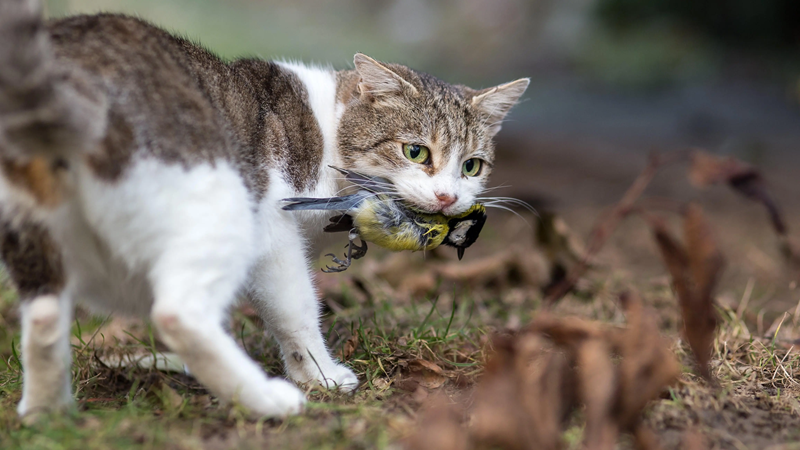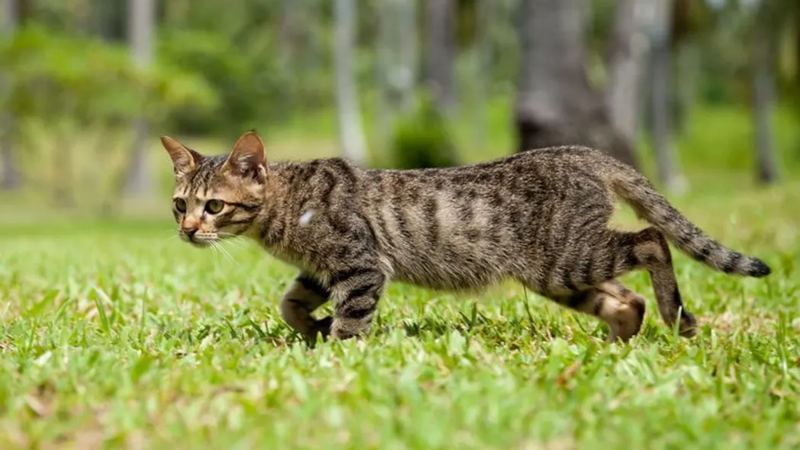In a remarkable turn of events, New Zealand has ceased its notorious feral cat-killing contest for children, following significant public outcry. This contentious event, which promoted the culling of these wild felines by youths, had been initiated as a response to the growing feral cat population in the country.
It was believed that these creatures were causing harm to New Zealand’s unique ecosystem and native wildlife. However, the contest drew international criticism, with animal rights advocates arguing that it encouraged cruelty towards animals from a young age. The backlash was significant enough to bring about a halt to the event, a decision that has been applauded by many.
The contest’s end has triggered a widespread dialogue about humane methods of controlling the feral cat population, such as sterilization and relocation, instead of resorting to lethal means. This incident has highlighted the need for a balance between wildlife conservation and animal welfare, provoking thought and discussion on more compassionate solutions to complex ecological problems.
Competition Cancelled After Public Outcry
In a striking turn of events, a highly anticipated competition scheduled to take place this year has been cancelled due to a significant public outcry. The competition, which was anticipated with much enthusiasm by participants and spectators alike, had been under severe scrutiny for quite some time. The organization behind it drew criticism over allegations of unfair practices, lack of transparency, and a host of other issues.
The backlash was immense, resulting in petitions and protests demanding the cancellation of the event. Critics argued that the competition failed to uphold the principles of fairness and equality, thereby creating a hostile environment for the participants. The mounting pressure eventually led to the drastic decision of cancelling the competition altogether. The decision was met with both relief and disappointment by different factions of the public.
Some saw it as a victory for justice and a step towards ensuring fair play in such events, while others considered it a setback for the community, taking away an opportunity for participants to showcase their talents and skills. Despite the mixed reactions, it has sparked a much-needed debate about the ethical standards and practices in organizing such events.
The repercussions of this incident are likely to resonate for a considerable time, potentially leading to a significant overhaul in the way competitions are conducted in the future. This incident has set a precedent, and it is hoped that it will lead to the implementation of more stringent regulations and checks in the future to ensure that all competitors are treated fairly and that such events are conducted in a transparent and equitable manner.

Controversy Surrounding the Event
The topic “Controversy Surrounding the Event” implies that the event in question has sparked significant debate or disagreement among various groups or individuals. This could be due to a multitude of reasons. It’s possible that the event is seen as morally questionable, with some people believing it to be socially unacceptable or ethically problematic.
For instance, a public demonstration that promotes views seen as discriminatory or offensive can lead to controversy. On the other hand, the event might involve actions or decisions that are perceived as unfair or unjust by certain groups. For example, a controversial competitive event might involve an athlete seen as undeserving of their victory, leading to disputes over the fairness of the competition’s rules or judging process.
Another possibility is that the event, while not inherently problematic, incites controversy because of its context or implications. For instance, a political rally could become controversial if it’s perceived as stoking division or hostility among different societal groups. In summary, controversy surrounding an event can stem from disagreement over the event’s ethical or social acceptability, perceived unfairness or injustice, or problematic implications or context. Regardless of the specific causes, such controversy often leads to heated debates, protests, or even legal challenges, as people strive to express their views and fight for what they believe is right.
Alternatives to Animal Control
Alternatives to animal control are essential to explore for a more humane and sustainable approach towards dealing with stray and wild animals. The traditional practice of capturing and euthanizing is gradually being replaced by more compassionate methods, largely due to public demand and the increasing awareness about animal rights. Trap-Neuter-Return (TNR) programs are one such effective method being adopted worldwide. This approach involves capturing stray cats or dogs, sterilizing them, and then returning them to their original habitat. This not only helps control the population but also improves the health and behavior of these animals.
Another viable alternative is the implementation of community-based solutions like animal sanctuaries and rescue centers. These places provide a safe haven for stray and unwanted animals, giving them the care and protection they need. Public education and awareness campaigns are also crucial. They help people understand the importance of responsible pet ownership, including the benefits of sterilization and the perils of abandoning pets.
Non-lethal wildlife management strategies are also gaining popularity. These include habitat modification to discourage nuisance wildlife, use of deterrent devices, and relocation. However, it should be noted that relocation should only be done by professionals to avoid causing stress or harm to the animals, and only in situations where it’s absolutely necessary.
Wildlife fertility control is another promising field being explored. This is a non-lethal and long-term solution that uses contraceptives to control wildlife populations humanely. Lastly, coexistence strategies are being promoted to encourage people to live harmoniously with wildlife. This involves understanding animal behavior, respecting their space, and making necessary adjustments in human behavior and infrastructure to minimize conflicts.
Advocating for these alternatives to animal control can bring about a significant shift in how we deal with stray and wild animals. It’s not just about controlling their population, but about ensuring their welfare and coexistence in a shared environment. This approach fosters a more compassionate and sustainable interaction between humans and animals.

Reactions from Animal Welfare Groups
Animal welfare groups play an instrumental role in highlighting issues surrounding the treatment of animals. Their responses to various scenarios involving animals, whether it’s factory farming, animal testing, or habitat destruction, can be passionate and insightful. When they perceive that animals are being subjected to harsh or inhumane conditions, these groups act as advocates, voicing their concerns and lobbying for changes in policies or practices.
They use research and scientific data to back their claims, aiming to educate the public and relevant authorities about the potential harm or distress suffered by animals. These groups also provide resources and support for individuals who wish to make more animal-friendly choices. Their reactions are not only about raising awareness or advocating for change, but they often involve direct action. This can include rescuing animals from harmful situations, providing medical care, and even rehabilitating and rehoming them.
Animal welfare groups’ responses are driven by a deep respect for all living creatures and a belief in their right to live free from pain and suffering. They strive to make a difference by enforcing stricter standards and procedures for animal care and working towards a future where animals are treated with kindness and respect.

Historical Context of Similar Contests
Throughout history, the concept of contests has been an intrinsic part of various societies, employed as a mechanism for showcasing strength, intellect, skill, or valor. It’s fascinating to delve into the historical context of similar contests. The Ancient Greeks, for instance, introduced the Olympic Games in 776 BC as a platform for athletes to demonstrate their physical prowess, while also honoring their gods. Fast-forward to the medieval era, and we find the tradition of jousting tournaments, where knights would engage in combat to prove their bravery and skill. These contests, although rooted in different cultures and time periods, shared a common purpose of rewarding exceptional abilities and promoting a competitive spirit.
In the intellectual arena, contests were prevalent as well. In the Renaissance, the patronage system often led to artistic and scientific competitions, where individuals like Da Vinci and Galileo vied for recognition and support. Literary contests, too, have a rich historical context. Dating back to the Middle Ages, poetry competitions known as ‘poetic jousts’ were popular in Europe. These jousts laid the groundwork for modern literary contests, where authors compete for prestige and literary acclaim.
Sociopolitical contests have also played a significant role throughout history. The concept of democratic elections can be traced back to ancient Athenian society, where citizens had the opportunity to directly participate in decision-making. While the methods and structures of these contests have evolved, their core objective remains the same – to choose a representative based on merit.
Even in the world of commerce, contests have been prevalent. From the historic spice trade routes to contemporary start-up pitch competitions, the idea of outperforming rivals to secure resources or market dominance is a recurring theme.
In conclusion, the historical context of contests is diverse and multi-faceted, spanning across physical, intellectual, sociopolitical, and commercial spheres. These contests, despite their varied nature and objectives, highlight the enduring human propensity for competition and achievement.
